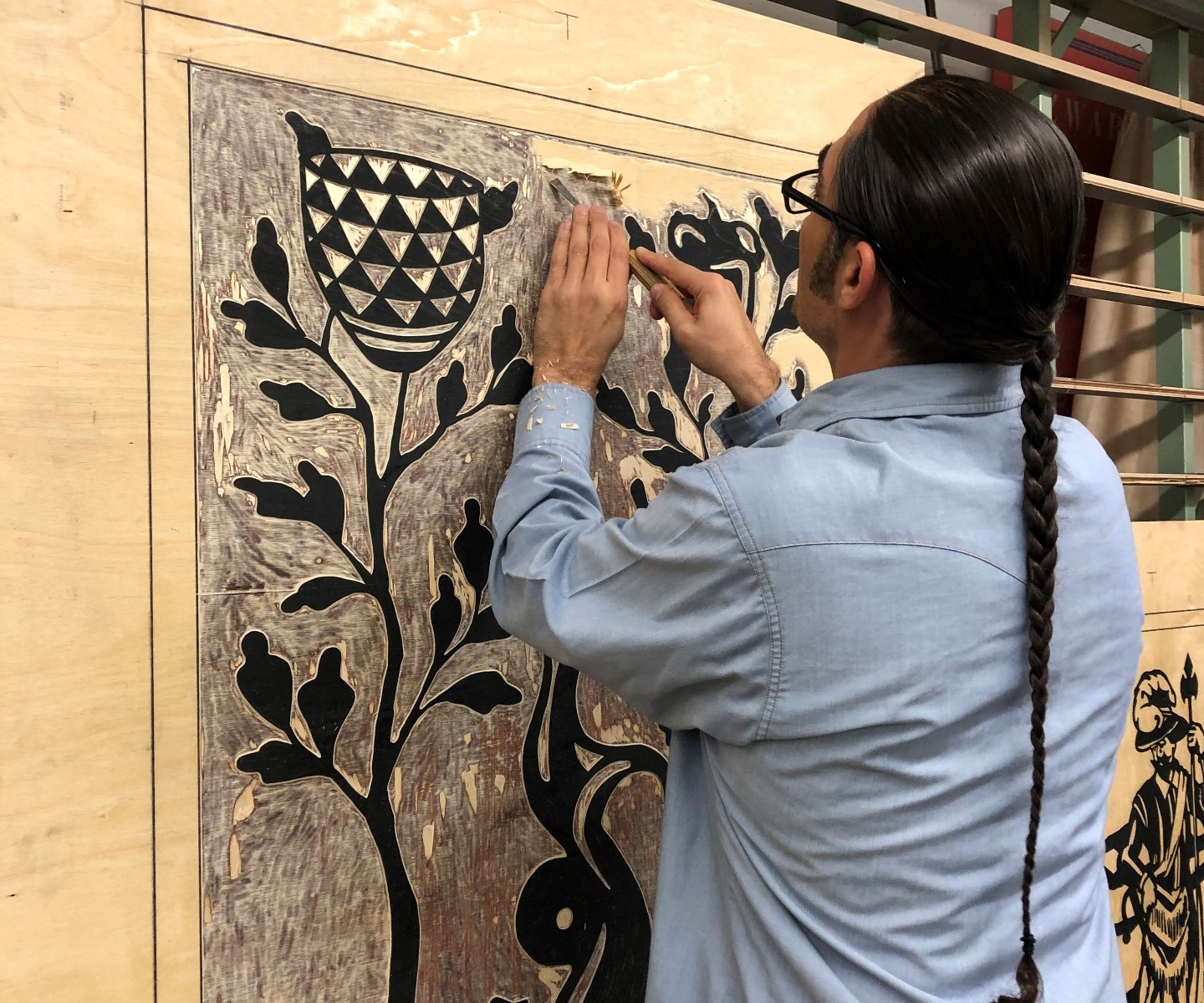
'First Americans': exhibition on turbulent past and present of native Americans
The First Americans exhibition in the National Museum of Ethnology showcases the resilience and creativity of native Americans. Striking artworks, fashion and prints show that the past is never far away. Artist Jacob Meders was inspired by 16th-century prints from the Leiden University Library. The exhibition can be viewed until 25 July 2021.
‘We always carry our ancestors with us,’ commented Joe Horse Capture from Los Angeles in a video conversation. With the current travel restrictions, he was unable to travel to Leiden for the opening on 9 July. Horse Capture, historian and descendant of the A’aniiih in Montana, put together the exhibition with museum curator Henrietta Lidchi. He commented: ‘Many exhibitions on Native Americans are either historical or contemporary. This exhibition in Leiden combines the present and the past.’

Traditional motifs
This format lets us see historical objects and utensils beside their modern variant, to show that native American artists often refer to the classical motifs of their forefathers, such as a figurative pattern on a 12th-century bowl beside a 21st-century variant representing the worship of the mobile phone.
Native Americans are a very diverse group and in the US alone the federal state recognises 537 indigenous ‘tribes’. The exhibition will run until 26 July 2021 and is part of the commemorative activities in the Leiden400 Pilgrim Year. In 2020 it is 400 years ago that the Pilgrims (English Protestant religious refugees) left Leiden after a stay of a year and founded a colony in America. The colonisation had dramatic consequences for the native inhabitants.

Fashionable twist
Clothes show how present-day fashion designers play with classical elements, such as beads and animal motifs, giving them a fashionable twist. Tradition still serves as a source of inspiration, but at the same time leaving room for contemporary interpretations.

University Library
Visitors cannot miss the large woodblock prints by Jacob Meders. Meders, an American artist with Mechoopda and Maidu roots, created a series of five woodblock prints as a response to the 16th-century prints that he studied in Leiden University Libraries’ special collection. As early as in the 16th century European artists produced images of native peoples in America. An important engraver in this genre was Theodoor de Bry (1528-1598). This Flemish illustrator produced prints depicting the conquest of America, basing his work completely on third-party reports, as he himself was never in America. Meders saw these prints – before the lockdown in February this year – in the University Library in Leiden.

Who are the rightful narrators?
In the woodblock prints that Meders made after his visit, he refers to the 16th-century representations by using the same imagery; such as the representation of native inhabitants and frequent motifs including corn and basketry. He refers to colonisation and violence and shows a figure whose upper body is a European colonist and whose lower body is a native of the region. The 16th-century prints were used to show that Europeans were superior to the indigenous people. Meders’ aim with his work is to raise the question of who are the rightful narrators of native American history.

Video games
An important theme of the exhibition is regaining sovereignty. Protest posters point to the struggle for land rights that is still going on today. Artist Skawennati makes video games and creates virtual environments with ‘native American spaces’. She references old native creation stories as a warning that people need to look after the world better.

Native baby on the moon
Photographer Hulleah J. Tsinhnahjinnie uses humour to draw attention to ‘First Americans’. On a photo of the first moon landing, a native toddler hovers on her space scooter above the moon while Neil Armstrong has just landed and claims that he is the first man on the moon.
Metres-high wall painting
The exhibition starts and ends outside the museum with the metres-high wall painting by Yatika Starr Fields. In the colourful graffiti, several faces can be discerned that together portray a ‘cultural dialogue’. The artist draws inspiration from 17th-century Dutch master Frans Hals.

-

Jacob Meders
Text: Linda van Putten
